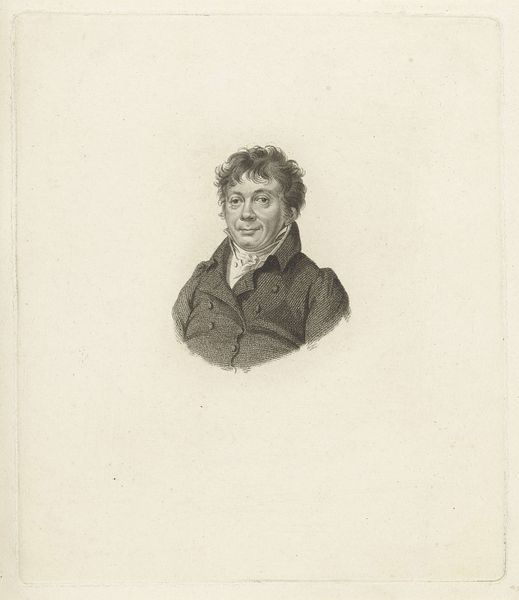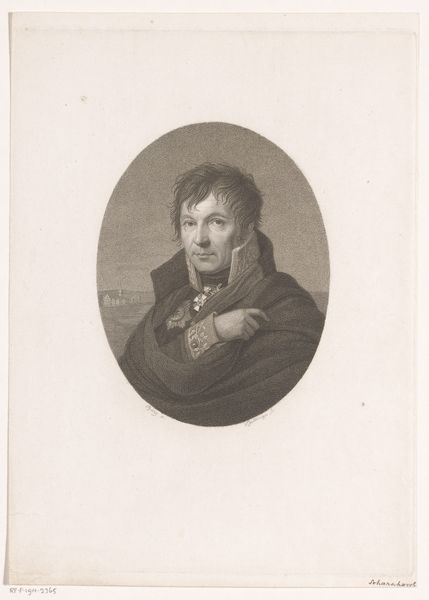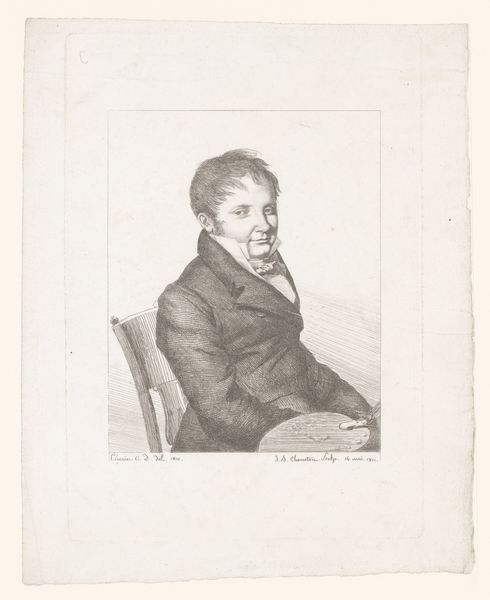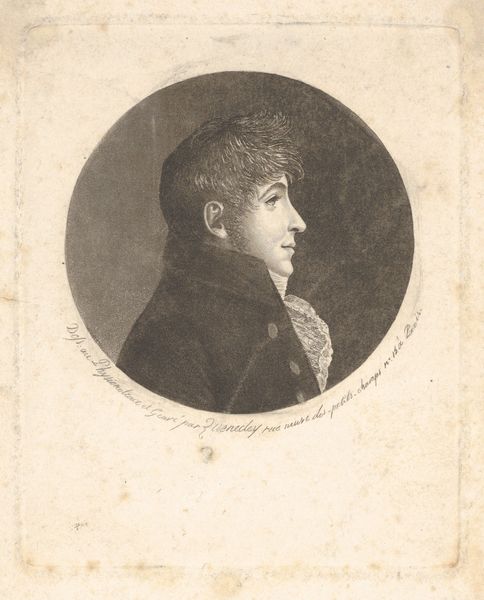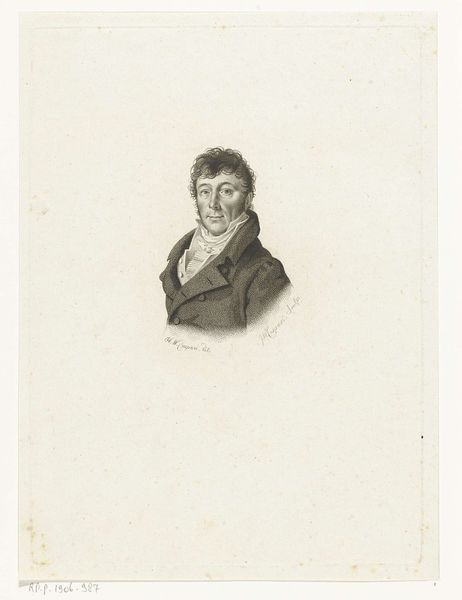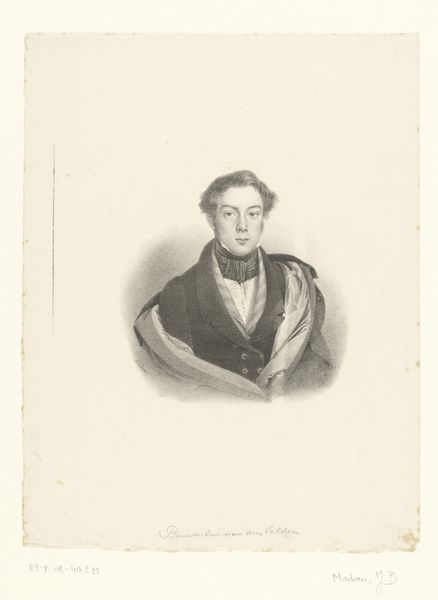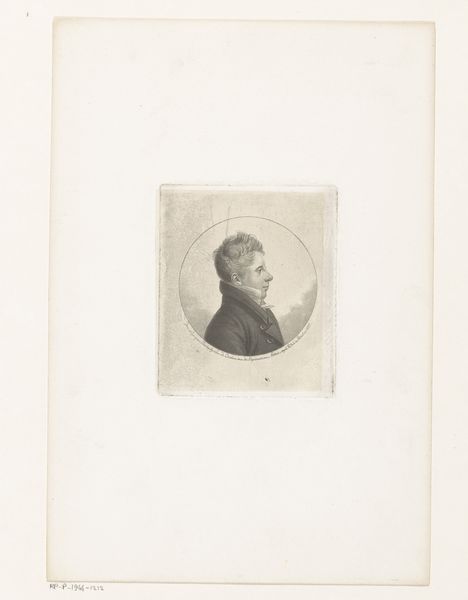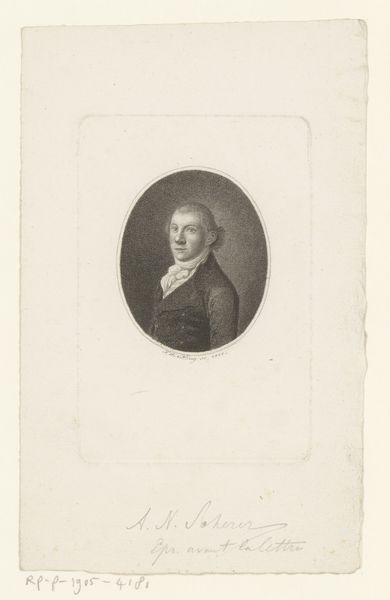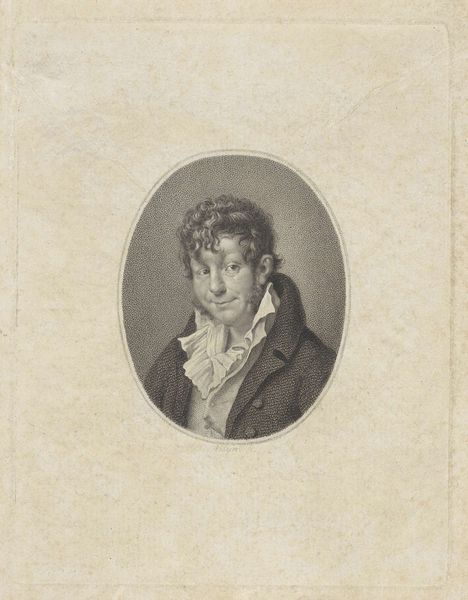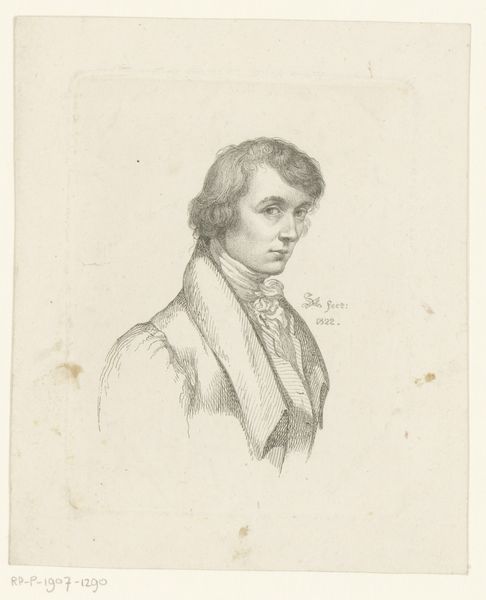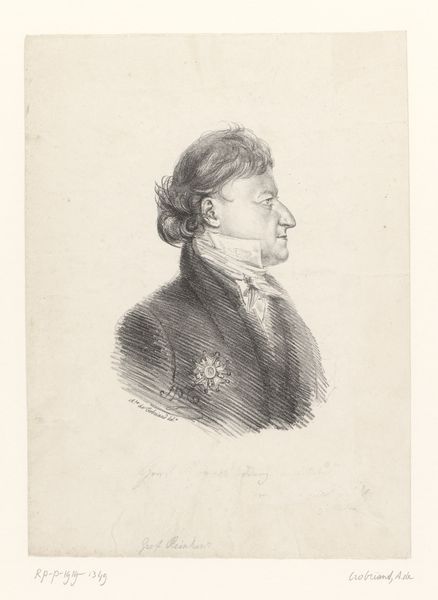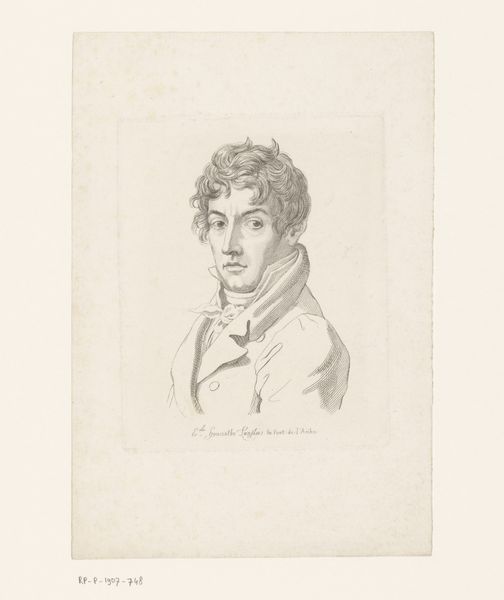
drawing, pencil, charcoal
#
portrait
#
pencil drawn
#
drawing
#
charcoal drawing
#
pencil drawing
#
romanticism
#
pencil
#
pencil work
#
charcoal
Dimensions: height 240 mm, width 164 mm
Copyright: Rijks Museum: Open Domain
Editor: This is "Portret van Rabe" by Robert Hertzberg, a portrait created in the 19th century using pencil and charcoal. I find the soft shading around the figure very compelling; it almost creates a ghostly, ethereal feel. How do you interpret this work within its historical context? Curator: Well, looking at this piece, especially the choice of the sitter portrayed only from the chest up, I immediately think about the rise of the middle class and the democratization of art patronage in the 19th century. Portraiture became more accessible, no longer just for the aristocracy. What statement do you think Hertzberg is trying to make about the sitter here? Editor: That’s a fascinating point. I hadn't considered that the format itself could reflect broader societal shifts. I wonder if he’s emphasizing the sitter's respectability through his clothing and composed demeanor? Curator: Precisely. Consider also the rise of Romanticism and its influence on portraiture. The focus shifts inward, towards the subject's character and intellect, which would increase portrait popularity with intellectuals. How does this emphasis play out visually in this portrait, do you think? Editor: I suppose the softness of the lines and the subtle shadows emphasize inner feelings rather than outward displays of wealth and status? It makes the work much more human and less austere. Curator: Exactly. The seemingly informal pose, combined with that gaze directed at the viewer, implies a certain intimacy and invites conversation, reflecting changing social dynamics. Does seeing it that way change your perception? Editor: Definitely! Seeing it through that lens of social change, makes me appreciate the artwork beyond its aesthetic appeal. It's like the picture invites you to ponder the world back then! Curator: Absolutely, thinking about social changes allows us to appreciate not just art as an object but how that object speaks to public values.
Comments
No comments
Be the first to comment and join the conversation on the ultimate creative platform.
